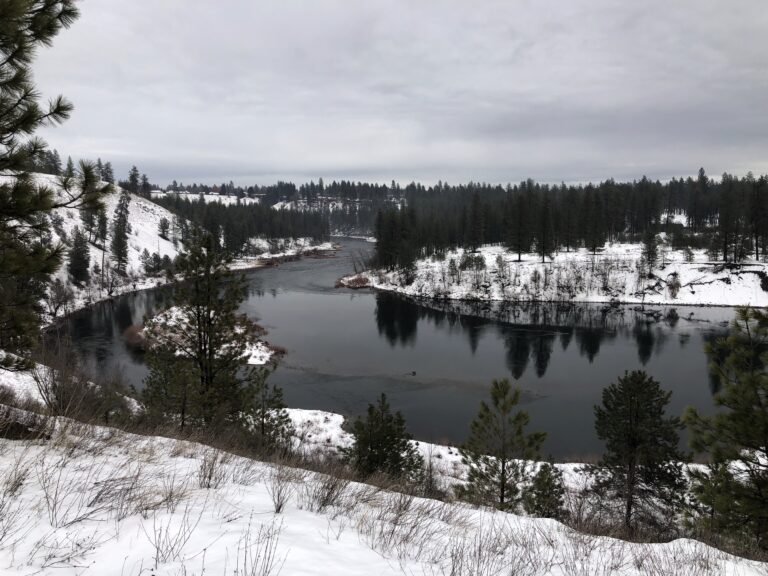Over 20 years ago I had my first job as a fledgling wildlife biologist on the Republic Ranger District in the Colville National Forest. That summer I saw my first bobcat, nearly biked into a bear, crossed the border for an air-conditioned movie theater and good wings, did loon nest success surveys, and sat outside caves to locate bat colonies, but the bulk of my job was trying to talk to goshawks. More accurately, I was doing call out surveys, where I would play the screeching call of a goshawk out into the waiting woods. Goshawks are extremely territorial and will respond to an intruder, many times, with more than a call back.
Goshawks, Accipiter atricapillus, are the largest member of the three North American woodland hawks, which include sharp-shinned and Cooper’s hawks. These agile, acrobatic forest hunters are collectively known as accipiters. They all use their relatively narrow wings and rudder-like tail to navigate dense branches and shrubs. You can identify the larger goshawks compared to Cooper’s and sharp-shinned hawks by their dark slate grey coloring, dark head with white eye stripe, and their yellow to amber eyes. You can also look for piles of feathers on the forest floor and you may be under a plucking perch.
They range primarily in western North America, where they nest in tall mature and old-growth trees. They prefer areas with fairly closed canopy where the shade helps to keep the undergrowth at a minimal. These older trees have branch formations not found in younger trees that are suited for their nests. Being stealthy forest predators, they perch on high trees, attacking with incredibly agile flight. They glide between slow wingbeats, tucking and gracefully maneuvering through trees. It is worth watching some slow-motion videos. Goshawks are adept predators and use their agility to catch songbirds in flight, squirrels directly off the branch, or snowshoe hare on the ground. They will even go after much larger prey, including pileated woodpeckers and forest grouse.

Goshawks put a lot of energy into nest building and frequently will repair or shore up the same nest season after season. Females will work for hours each morning gathering or breaking off sticks, and they will continue to re-line the bowl of the nest with leaves throughout nesting. These nests can span up to four feet wide and two feet high. If you have a keen eye, particularly in winter, you can spot them in the forest canopy.
But goshawks are not to be trifled with. For one, Washington Department of Fish and Wildlife classifies these birds as a species of concern, meaning the “species require protective measures for their survival.” The primary causes of the low numbers of goshawks are lack of prey and dwindling habitat due to intensive logging practices that are changing the forest structure. The other reason to be wary is that you’d need to wear a helmet and back protection if you approach an active nest. I am thankful I had at least a hat and pack the first time I found a nest. These birds do not fear divebombing, you, talons-first, in order to protect their nests.
That first summer, our field crew walked for hours every day on a proposed logging project, stopping every half mile to play a CD of a goshawk call, waiting for a reply. Although we did see some goshawks out of that project area, we only got responses from inquisitive mimicking grey jays and larger territorial red-tailed hawks.
Thinking back, I wonder what was so intriguing about this forest tucked in the northeast corner of Washington—the prospect of hot summer field work (I can’t remember it ever raining) or even the opportunity to see this elusive forest hunter—that I packed up my little two-wheel drive truck with a mountain bike and all my climbing gear and left Rhode Island, taking the first of what would be many cross-country roads trips. After all this time, I still crave a long field day in the woods. Just a few weeks ago, I was back on the Colville, once again calling for that elusive goshawk.
Adam is eagerly awaiting his next goshawk encounter while trail running or working in the Colville National Forest. Between some fun on the forest and water, he will be conducting stream habitat surveys and trying to get humans to coexist amicably with beavers.













